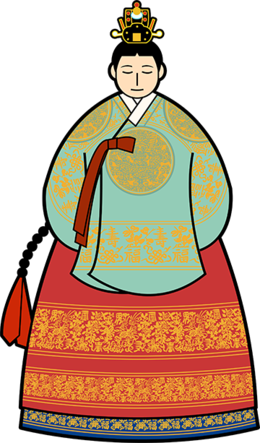GGHS 김하○A

| |
| Student ID | 1605 |
| Wiki ID | GGHS_HRB |
목차
2019 Winter Personal Essay
What you feel and realize from participating in the global camp
I participated in the global camp to have confidence in English as I prepared for the assignment and talked with native English teachers. The theme of our group was Society and Culture of Ganghwa in the Modern Period. We investigated the shaman a theatrical form. I was in charge of researching and translating the history of the shaman. During the research and translation of the data, we communicated with the teacher and shared the data with the staff.Through this global camp, I learned more about Ganghwado's social culture. Also, I feel confident about English now. Preparing for the presentation with the staff was good, but I was sorry that we couldn't talk much because we only focused on preparing the presentation due to lack of time. Next time, I want to participate in the global camp on another topic.
What I researched
A Change in Social Perception of Shamanism
History of Shamanism
Korean Shamanism encompasses a variety of indigenous beliefs and practices that have been influenced by Buddhism and Taoism. In contemporary Korea, shamnism is referred by the name "muism and shaman mudang". The mudang, usually a woman, serves as an intercessors between a god or gods and human beings. It is belived that Dangun founded Gojoseon, Korea's first kingdom, in 2333 BC. Dangun ruled over his country for 1,500 years, before abdicating. After this, he hid himself in the mountains and became a Shanshin (an immortal mountain spirit). In the Three Kingdoms Period( Buddhism was introduced from China, and Buddhism developed into a national belief system, weakening political power of shamanism.) - During the Goryeo Dynasty (the era of shamanism flourished due to King Taejo, the founder of the Goryeo Dynasty, and the position of the shaman became stronger, leading to the involvement of politics.) - During the Joseon Dynasty (the shamanistic faith was suppressed due to the Confucian ideas, The emergence of Sadangpae, a group of shaman, made the shaman a social contempt, a critical time for the decline of the shamanistic .)
Shamans' suppression and reduction of roles
The tax was collected in the name of rooting out shamanism, but the tax was used to pay for the operation of the government, which resulted in the recognition of shamanism as a profession. The nation said it would root out the problem, but on the other hand it acknowledged and made official. Also, most of the tax payers are women, and the tax levies on women were exceptional. This led to argument that the tax should be abolished and the suspension of the collection of taxes on a shaman temporarily, but soon it's been resumed. Also, it was not easy to abolish them because the discretion of the local government was allowed to pay taxes, and it seemed to get worse. With the continued suppression of shamanism, the role of shamanism has been greatly reduced. The tradition of presiding over the rite at the national level was abolished, and the rite in the form of a festival, including the Emperor's rite, was prescribed and stopped. Soon, the role of a shaman at the national or institutional level disappeared. In addition, as the suppression continued, shaman demoralizing custom became fixation, weakening the shaman's status and reducing its role.
Persistent shamanism in the people's life=
Shamanism during the Joseon Dynasty was completely ostracized by Confucian scholars. Even during the Goryeo Dynasty, when synology was introduced, there was an unfriendly attitude toward shamanism, but in the Joseon Dynasty, it became much more explicit and institutionalized. As a result, the shamans were not given any institutional and public roles. Also, social status was demoted to slaves under the strict identity system and activities were heavily restricted. During Japanese occupation, the shamanistic were suppressed because it was defined as an old superstition. And with rapid modernization of Western society after liberation and Western rationalism prevalent in society, shamanism was still considered a superstition. Moreover, the widespread religion from the West has led to the destruction of shamanism. Meanwhile, shamanism did not harmonize with the upper-class culture during the Joseon Dynasty, and was shrunk through modernization and industrialization, but the shaman kept the status of folk religion intact. Although the roles of the shamans were not guaranteed in a systematic way, the public sought to find the shamans, consult them, and request them to perform services in important situations. Thus, the shaman has been handed down in various forms of exorcism.
